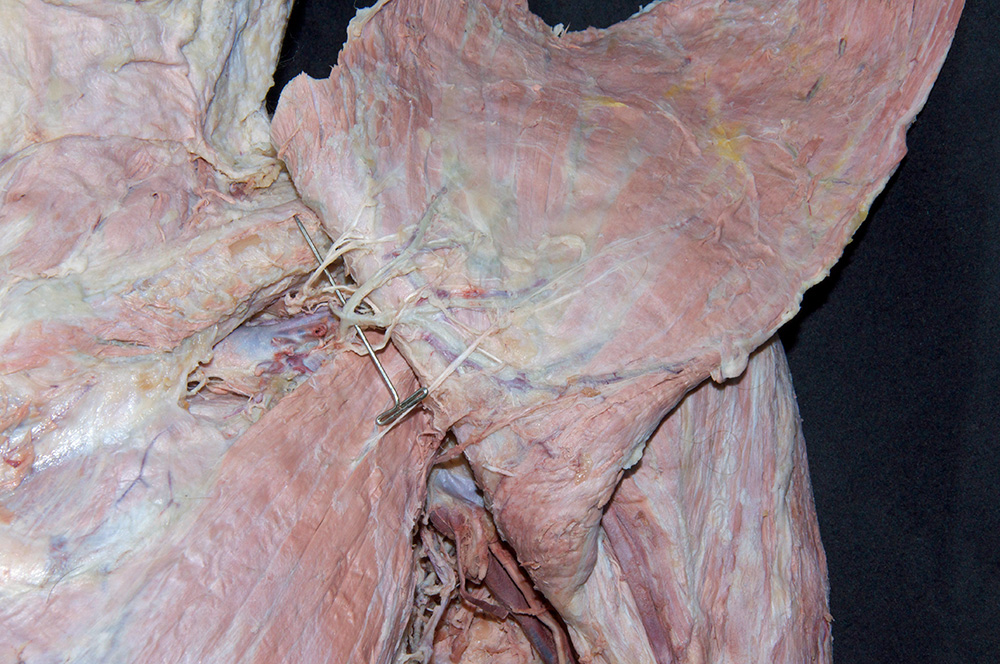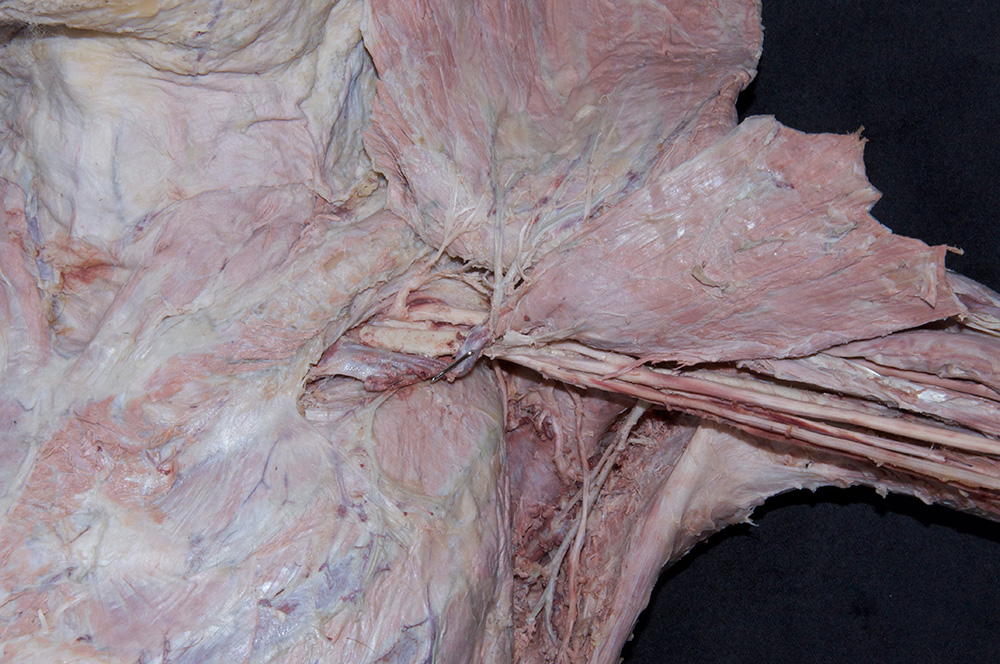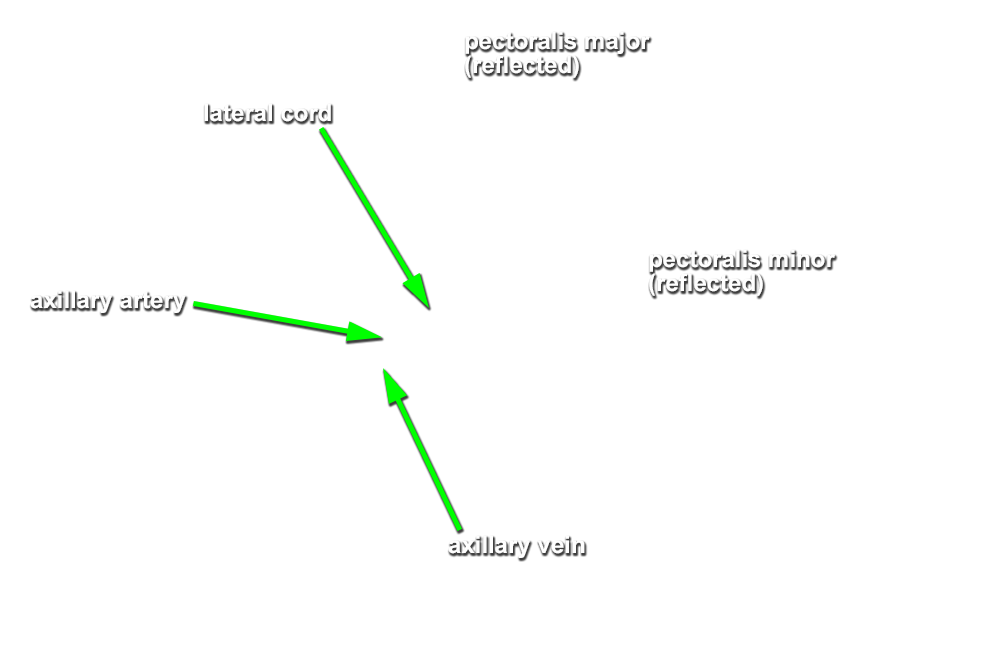Identify the thoracoacromial artery, axillary artery and the pectoral nerves. (G 2.26;N 415;Gl 28.34)
- Identify the proximal stump of an artery (medial side of the pectoralis minor muscle) cut during the reflection of the pectoralis major muscle. This artery is a pectoral branch of the thoracoacromial artery.
- Return to the pectoralis minor muscle. Free (blunt dissect) this muscle from the underlying structures. Use scissors to cut the costal attachments of the pectoralis minor and reflect this muscle in the superior direction towards its attachment to the coracoid process. The pectoralis minor muscle must be completely reflected to expose the axillary artery and the cords of the brachial plexus. Blunt dissect (from superficial to deep) along this artery by disrupting the clavipectoral fascia and the axillary sheath (the tough connective tissue surrounding the axillary artery and vein, and the cords of the brachial plexus).
- The first large vessel (more anterior) you encounter is the axillary vein. You may remove any tributaries draining into the axillary vein (except the cephalic). The axillary artery is posterior (deep) to the vein. The thoracoacromial artery is a branch of the axillary artery.
- Attempt to identify the stump of the lateral pectoral nerve. This nerve passes superior to the axillary artery and enters the clavicular head of the pectoralis major muscle.
- Identify the medial pectoral nerve piercing the pectoralis minor. This nerve passes inferior to the axillary artery.
Important Relationship
The thoracoacromial artery passes medial to the pectoralis minor muscle.





